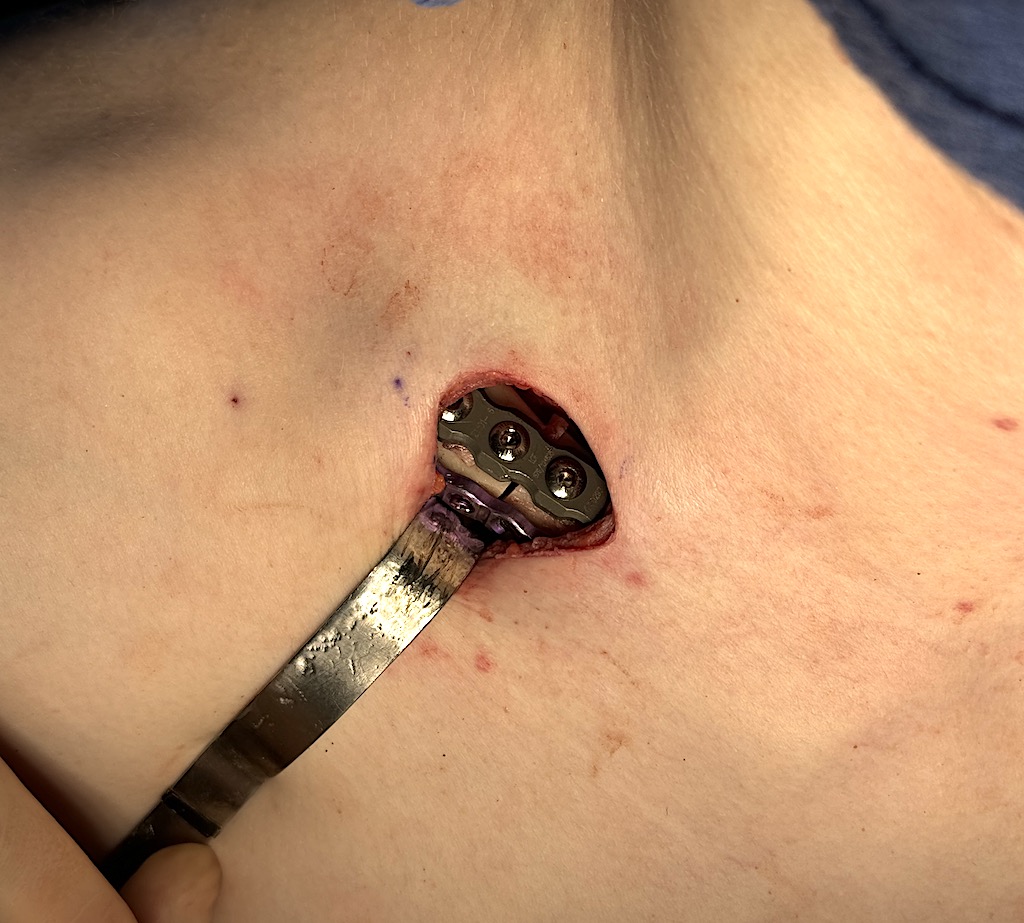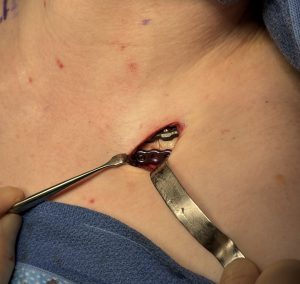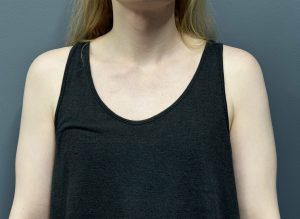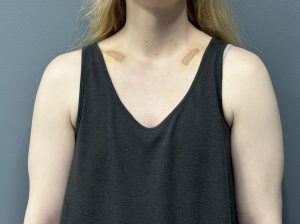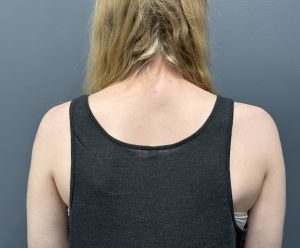Background: The clavicle bone has far more complex morphologic features that is usually perceived. It is the only long bone in the body, meaning a bone that is longer than it is wide, that has a horizontal orientation. I have rBesides being a non-straight curvilinear bone with two curved ends its thickness varies along its length. Because of functional loading it is thicker near the sternal and acromial joints than it is in its middle.
But an often under appreciated aspect of the clavicle anatomy is its cross-sectional shape. These cross-sectional characteristics varies along its length from oval to a more rounder shape. The sternal or medial end is more round and flares widely with a trumpet shape. The acromial or lateral end is more flattened which can easily be palpated externally. What is also evident in cross-section is the cortical-cancellous ratio which also varies along its length. The clavicle has not true medullary space even though that is how its inner core appears.
When performing clavicle reduction osteotomies these various anatomic characteristics come into play. Most importantly the thickness of the bone from top to bottom must be known since bicortical screw engagements are needed for secure plate fixation across the reunited bone ends.
Case Study: This 5’ 10” female desired shoulder narrowing surgery. She had a 50.5cm bideltoid distance with limited clavicle show.
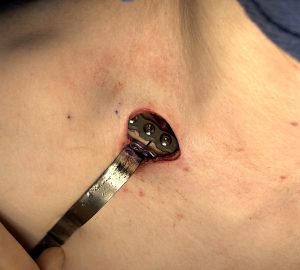

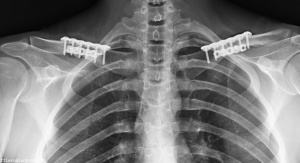
In clavicle reduction osteotomies the most important fixation is the superior 3.5mm plate with usually 6 screws, three on each side. These screws must be bicortical so the screw threads have two sides of engagement across its soft inner core. The anterior plate is ‘optional’ but has been used a lot given the short length of the superior plate due to the small incision used for access.
The anterior plate has its benefits and potential liabilities. Its benefit is the obvious added fixation security. Its theoretical disadvantage is that more holes and metal are placed in proximity to the reunited bone ends which could compromise healing. This is the logic of either not using it all, placing only two screws to help resist anterior and posterior displacing forces by being a stabilizing bar or placing 4 screws as a true fixation plate.
Key Points:
1) The length of the clavicles in tall patients may permit more bone removal but length alone does not ensure that can be done.
2) Tall patients may have longer and thicker clavicles which usually allow for double plate fixation.
3) Whether the anterior plate serves as a 2 screw stabilizing bar or a 4 screw fixation plate depends on the fit of the two ends of the clavicle when put together.
Dr. Barry Eppley
World-Renowned Plastic Surgeon

